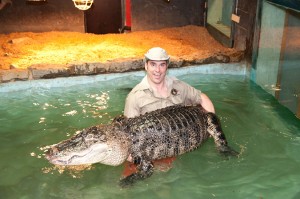Hey everyone,
We recently had a few good questions posed to us by a website visitor, and we wanted to cover some of the items off in a blog post to everyone. We’ve included the questions and our answers below.
Q: Hi! Your zoo sounds interesting and we are considering a visit. However, we have concerns about the ethics of keeping animals in captivity, especially so far from their native habitats. What can you tell us about your approach to getting these animals? For example, when you say you are both a zoo and animal rescue facility, which animals are rescued and from where?
A; Short of getting into specifics with every animal, we have NEVER imported an animal from the wild to put on display or utilize in programs we offer at the zoo. The majority of our animals come to us as unwanted pets (approximately 80%). We do have partnerships with the various Humane Societies and SPCAs across Canada and help with animal surrender placements as well as confiscations. We also have a partnership with Environment Canada for the placement of seized animals illegally entering Canada. On top of working with the SPCA, Humane Society, and Environment Canada, we do receive animals directly from people who have had them as pets. Sadly some of these may have been taken from the wild initially however, space permitted we do accept and quarantine them and take on in our collection. The remaining 20% portion of our animals come directly from captive breeding programs in Canada or from other zoos.
Q: Is there a plan that after a certain time in the zoo, that they be put back into the wild?
A: Unfortunately once an animal has been in the pet trade it is impossible to know what it may have come in contact with and what it may carry which could pose a risk to others in the population. As a result there are no programs for animals to be released back into the wild once they have been in the pet trade. This certainly is unfortunate however the wild populations would be put at great risk if this were to happen. This is why we regularly tell people to NOT take animals from the wild or if they want a ‘pet’ reptile for their child not to buy a wild caught animal which unfortunately are still sold in many pet stores in Canada. There are many captive bred reptiles that do make good pets and there really is no reason for animals to be taken from the wild so Billy can have one in his bedroom.
We invite our customers and patrons to ask us questions when they visit us at the zoo or when visiting our website. We’re committed to the ethical treatment of our animals and are equally committed to being open about how the zoo works.
Sincerely,
Little Ray

I was relieved to read that the vast majority of these animals are rescues. I do have some concerns about the treatment of the animals, the conditions in which they travel, and where and how they are kept when not on tour. Can you share some images of their habitats and travelling compartments? Has anyone done independent reports on the condition and care of these animals? My goddaughter would LOVE to see these creatures, and learn about them, but I want to be assured that they are well cared for, and treated in as ethical a manner as possible.
Hi Tracy. Thanks for your comment.
We were inspected by CAZA, The Canadian Association of Zoos and Aquariums and in our report it outlined that we exceeded CAZA’s standards for the quality of our zoo and displays, the health and conditions of our animals, and our educational programs. As well, we do partner with the SPCA and Environment Canada and we are regularly visited by them. Most importantly they stop by on a regular basis to bring us animals and are often unannounced so this is not a case that we ‘clean up before the get there’. Our facility is open to inspection on a regular basis. We have a variety of transport enclosures which vary depending on the species and their needs but CITES, the Convention on Trade of Endangered Species, has standards outlined on their website for the care and shipment of endangered species and we follow their standards for all.
Please let me know if you have further questions I could answer.
-Little Ray
Do the animals always stay in the exhibit or do they have a bigger enclosure allowing them more freedom after hours ?
Hello, at the event they do come out throughout the day especially the ones that benefit from more exercise. The lynx for instance does spend the majority of her day playing with a staff member and really is only in her exhibit to sleep. In Ottawa the ones that need them do have larger enclosures. You will see we have many smaller animals on display in large enclosures that are fine with this size habitat keeping in mind that most do come out for stimulus, enrichment and ‘exercise’.
Just wondering how much the tickets are here in saint john nb for children 2yrs of age and adults?
Does snake venom have an odour?
Hi Karen,
It really depends on the species. Some do, and some don’t.
Was wondering if it would be possible if you could maybe be able to come to Sarnia,ON., for the ones who can’t make it to London, ON.?
What animals will be at the Western Fair London Ont?? Orjis reptiles??
What kinds of animals will be at Lon ont Western Fair.? Or will it just be reptiles? ??
Pingback: In Like A Lion | Frank and Zappa's Garden
How much time do i need to visit the whole zoo?
What is the actual adress of the zoo near Hamilton because I am confused?